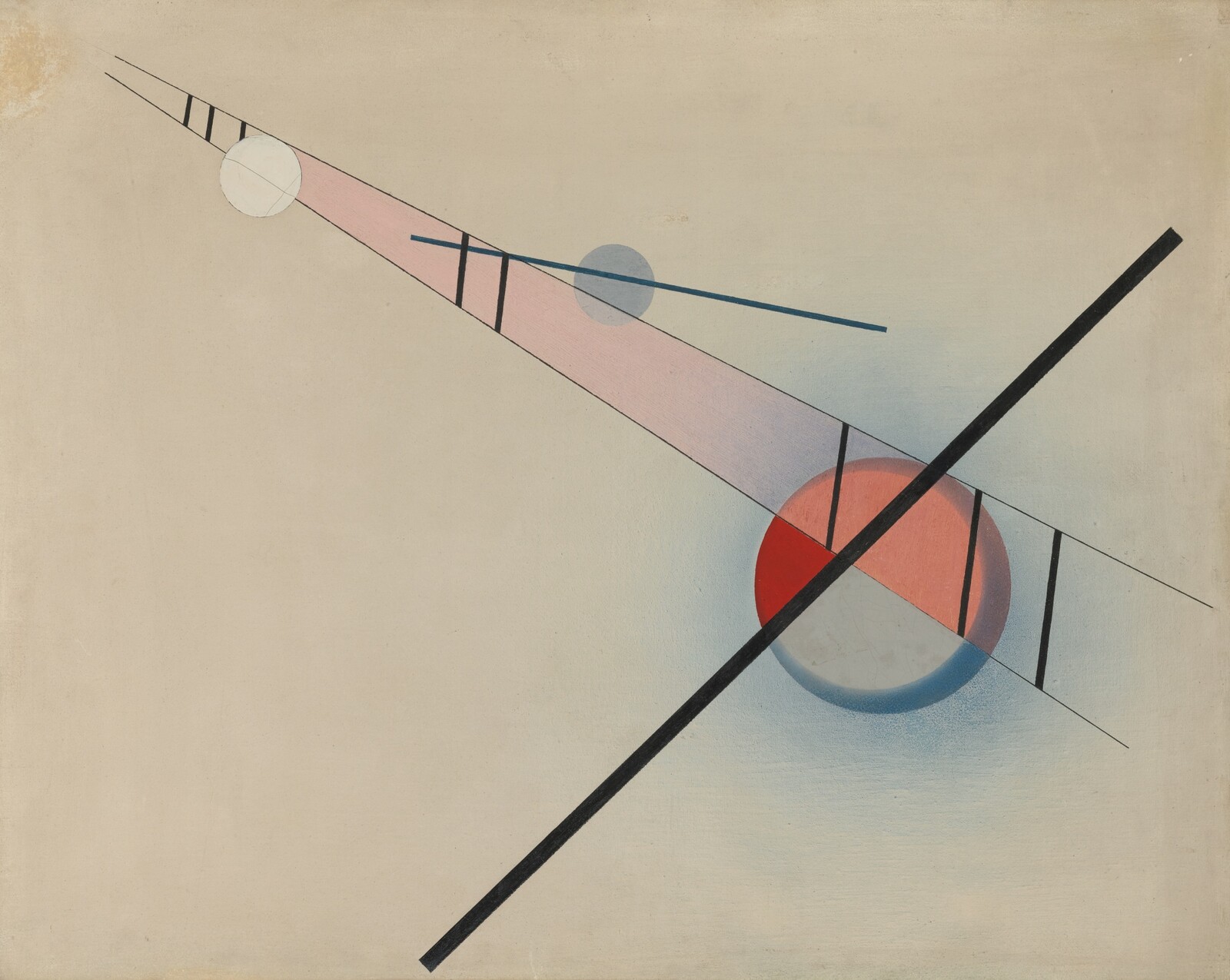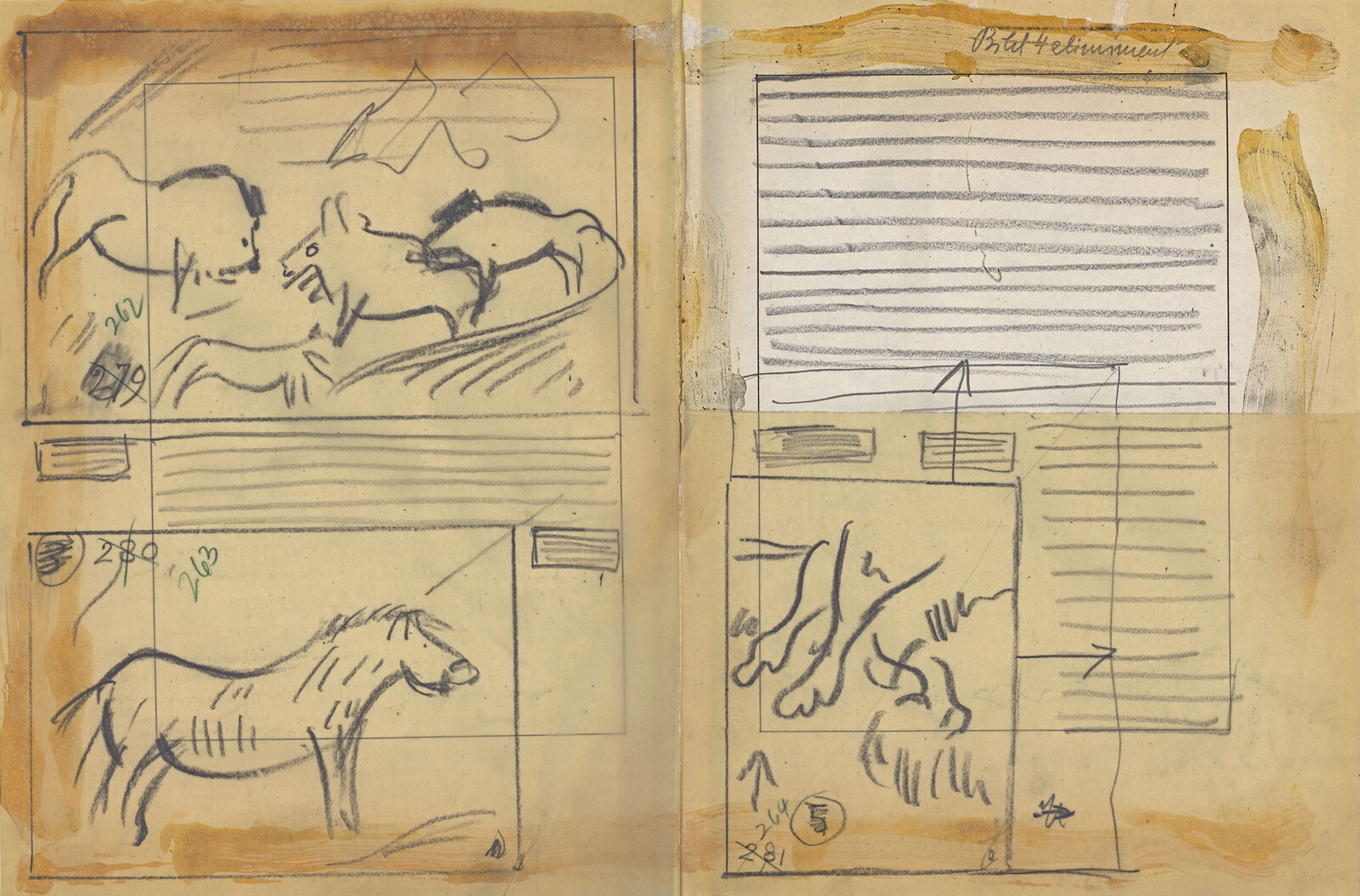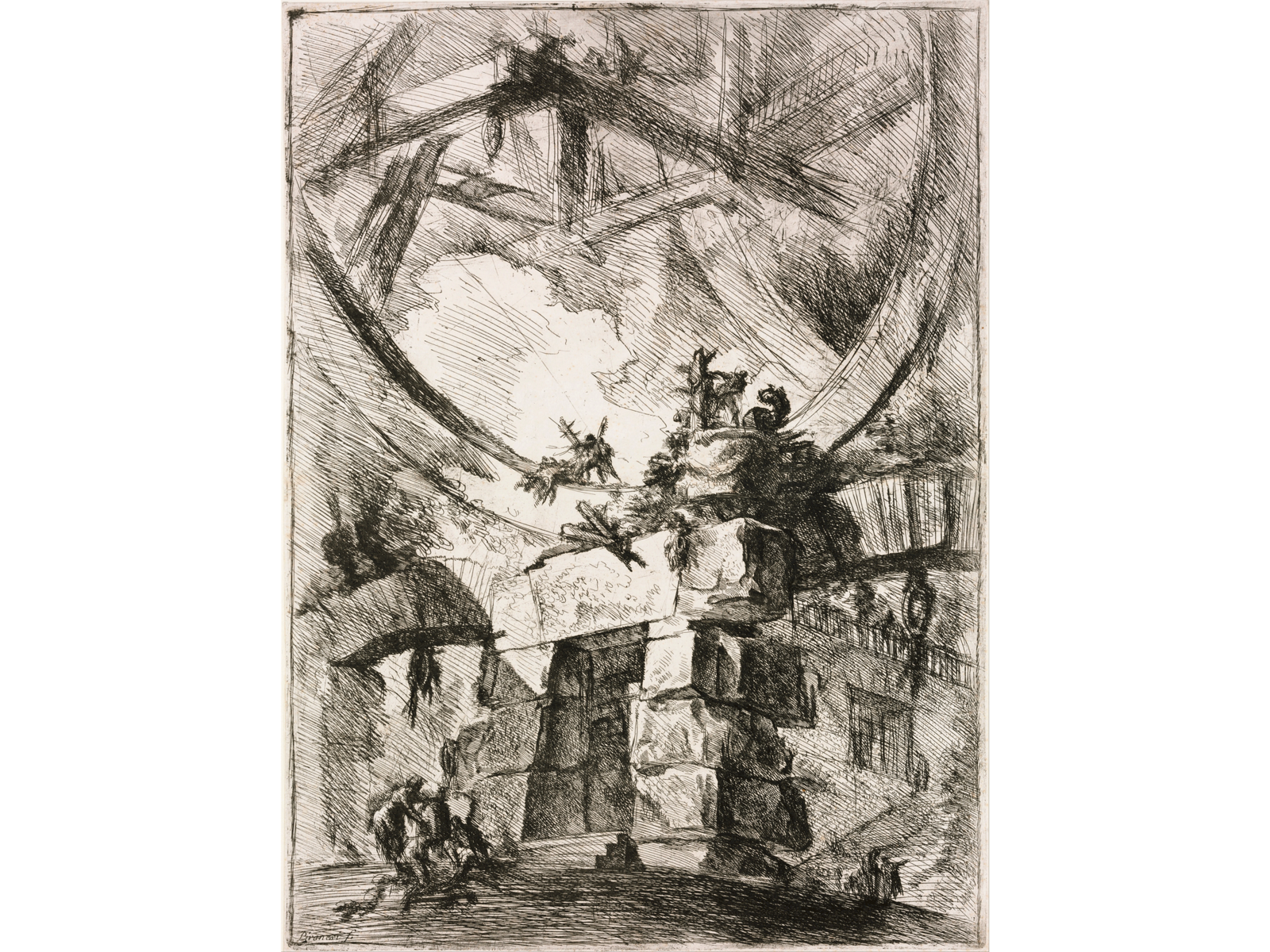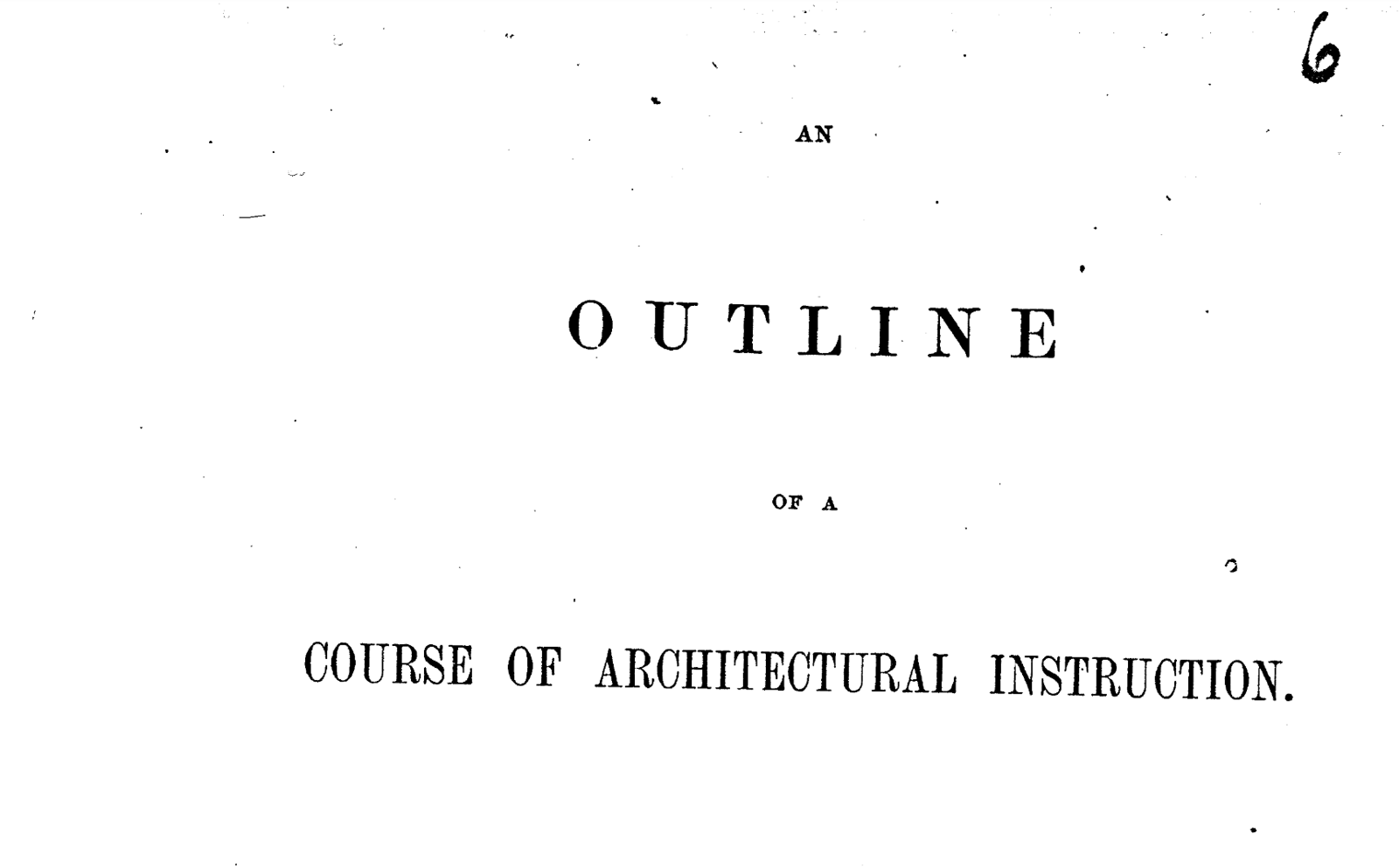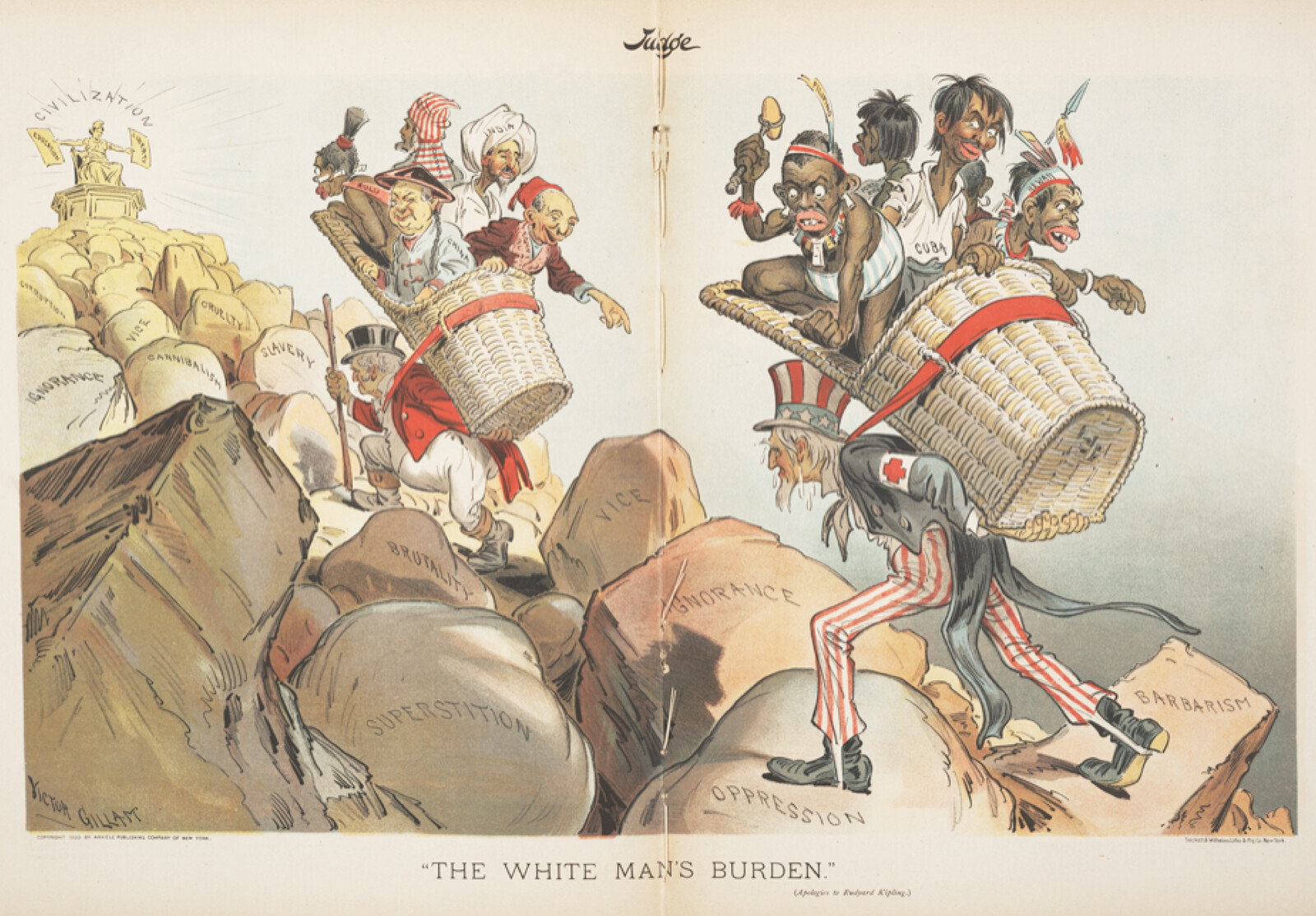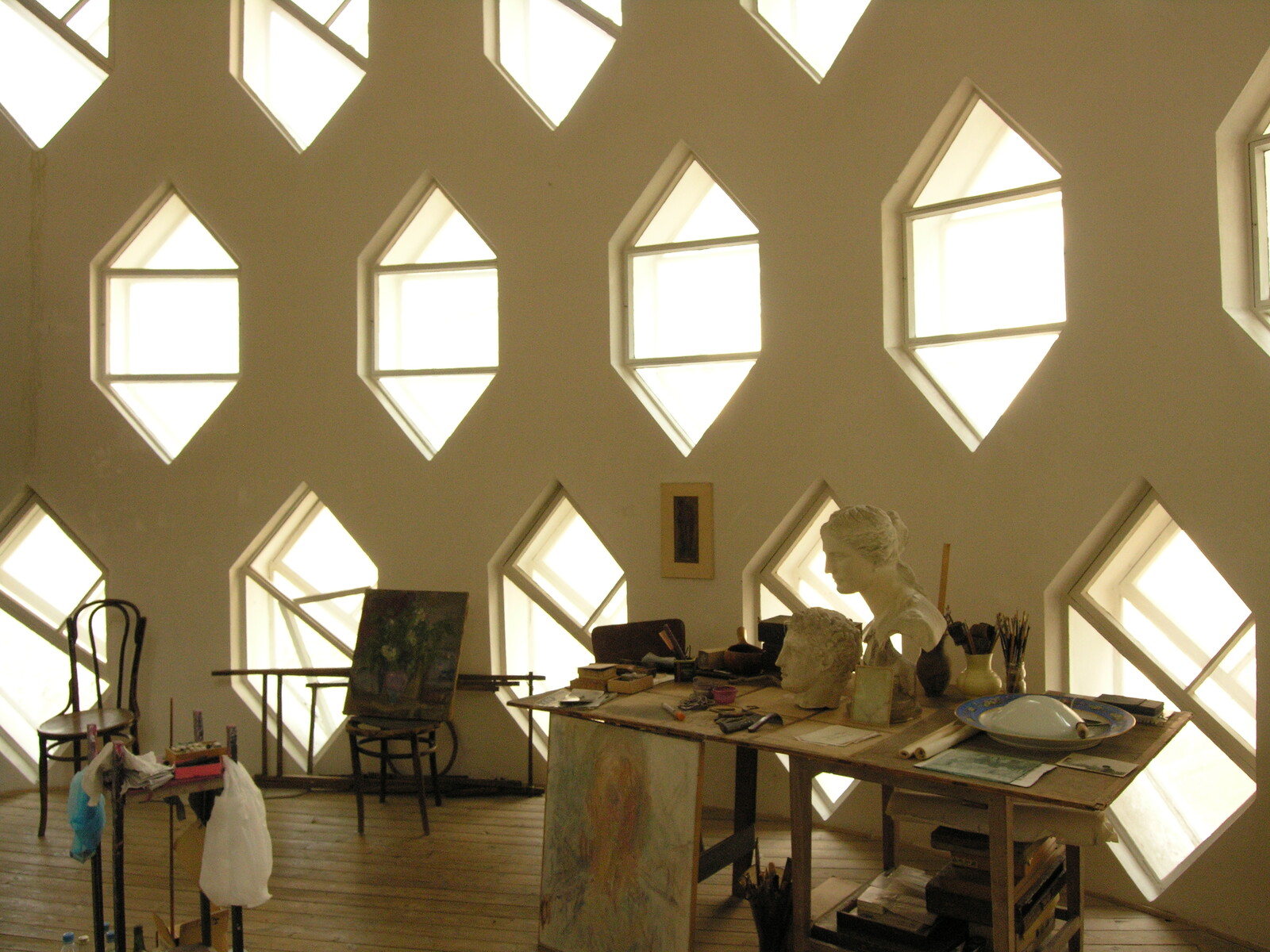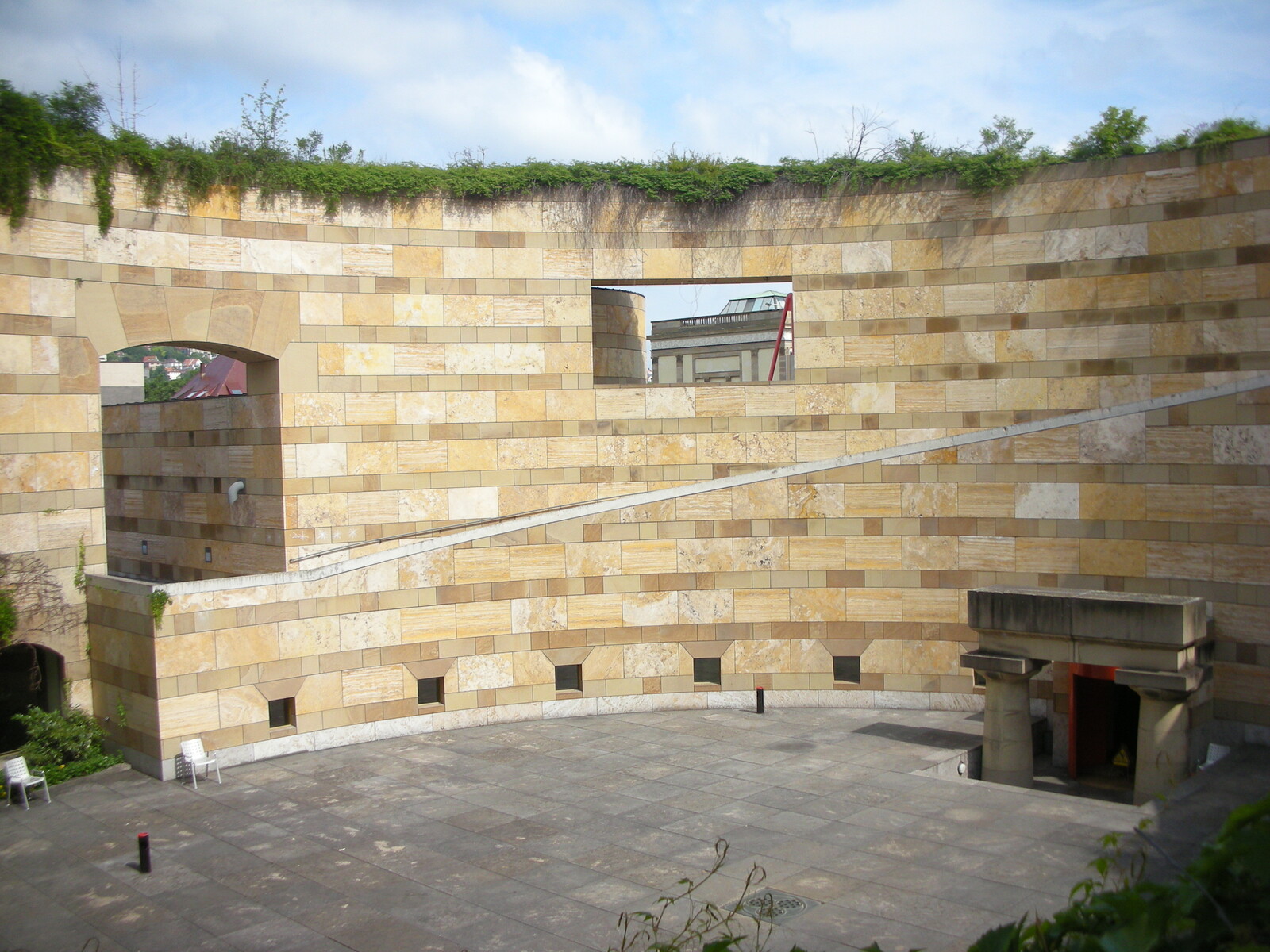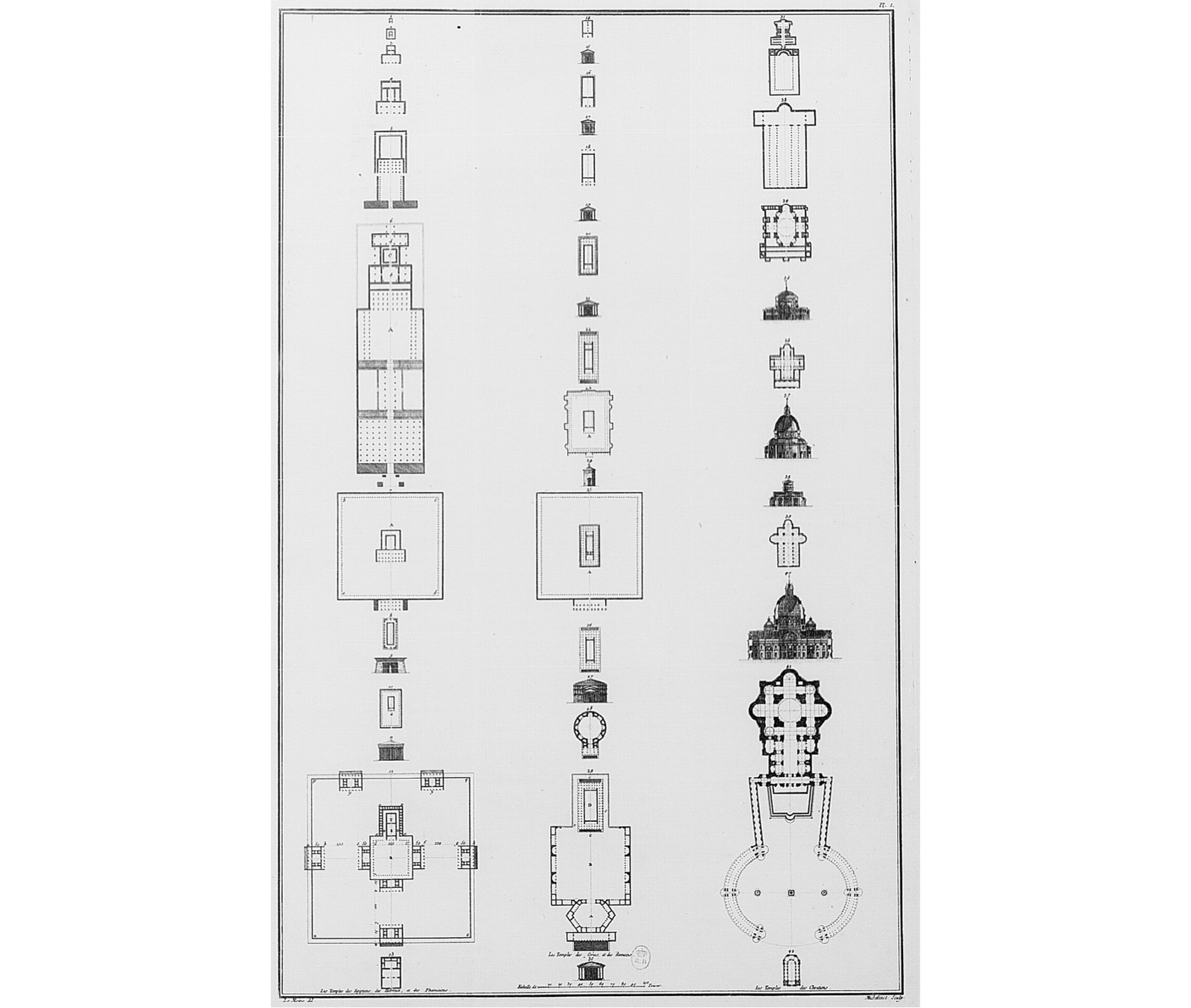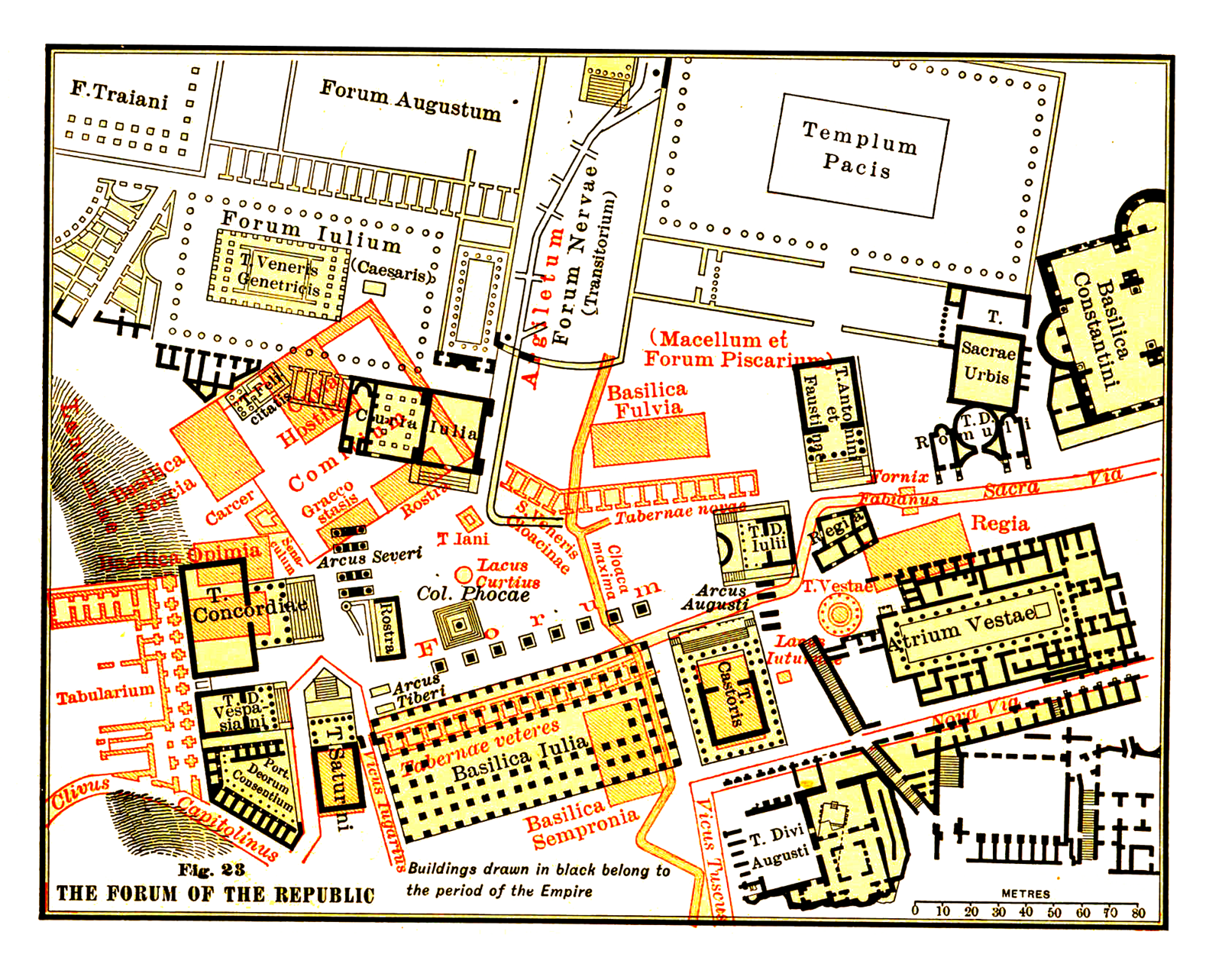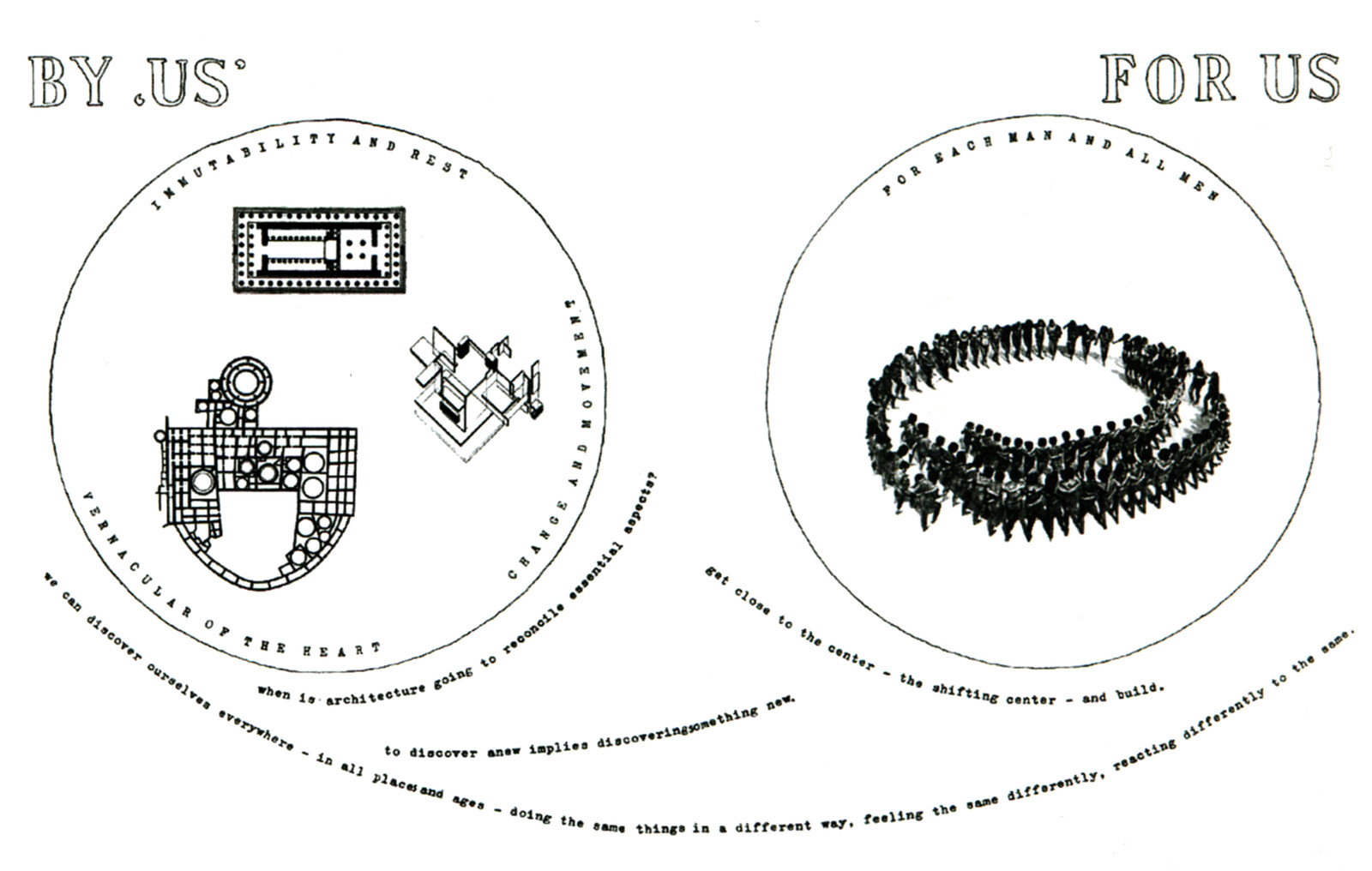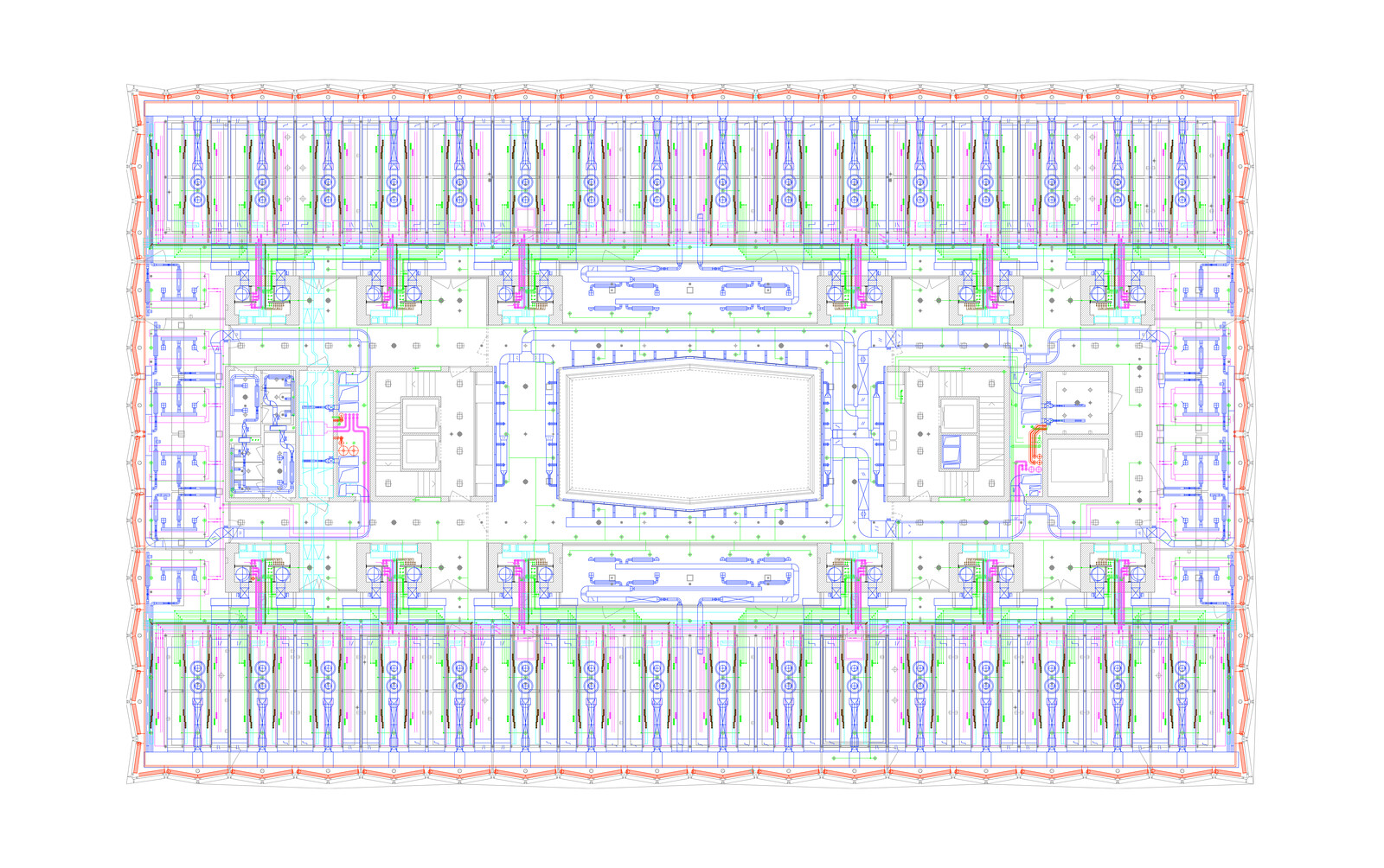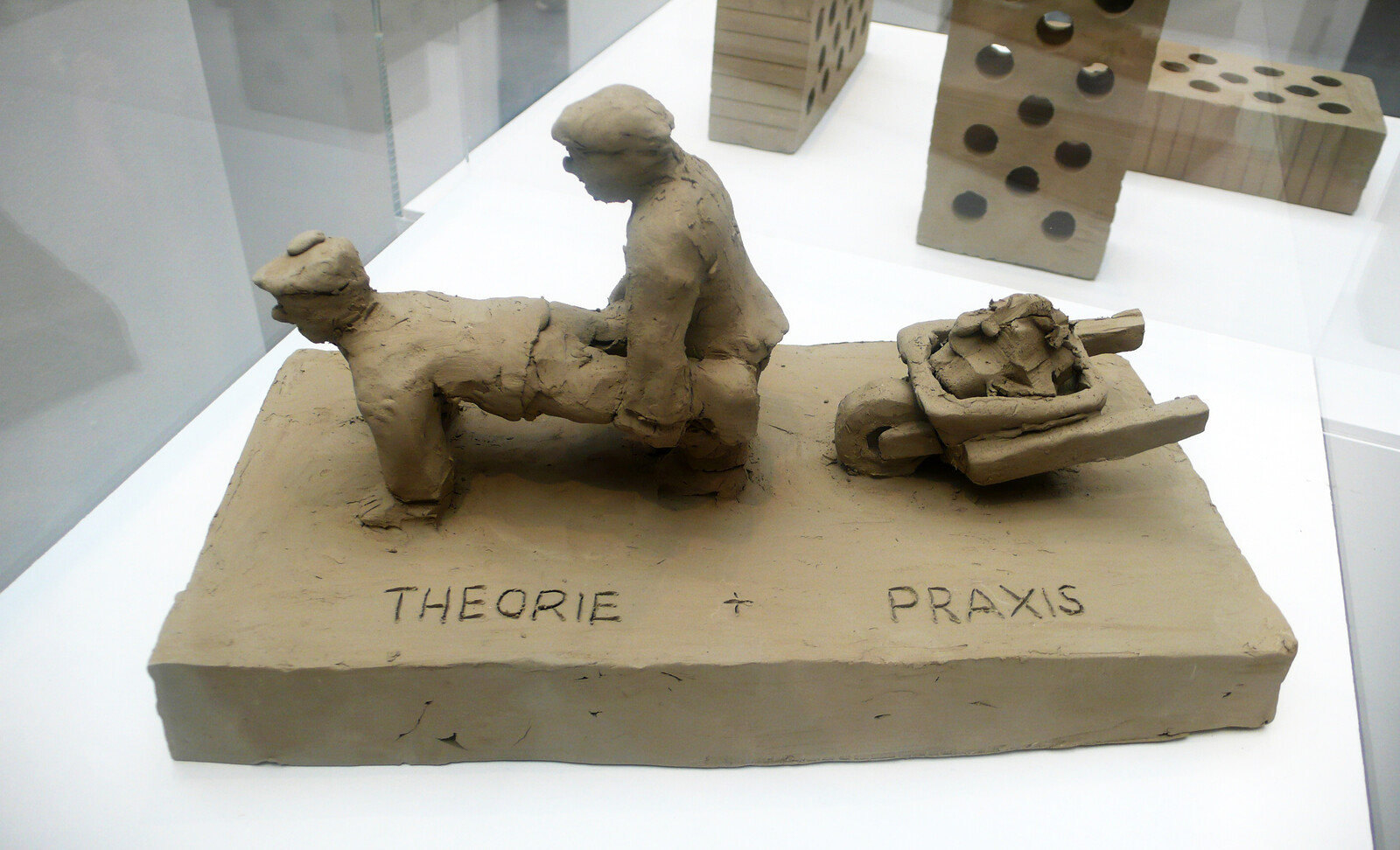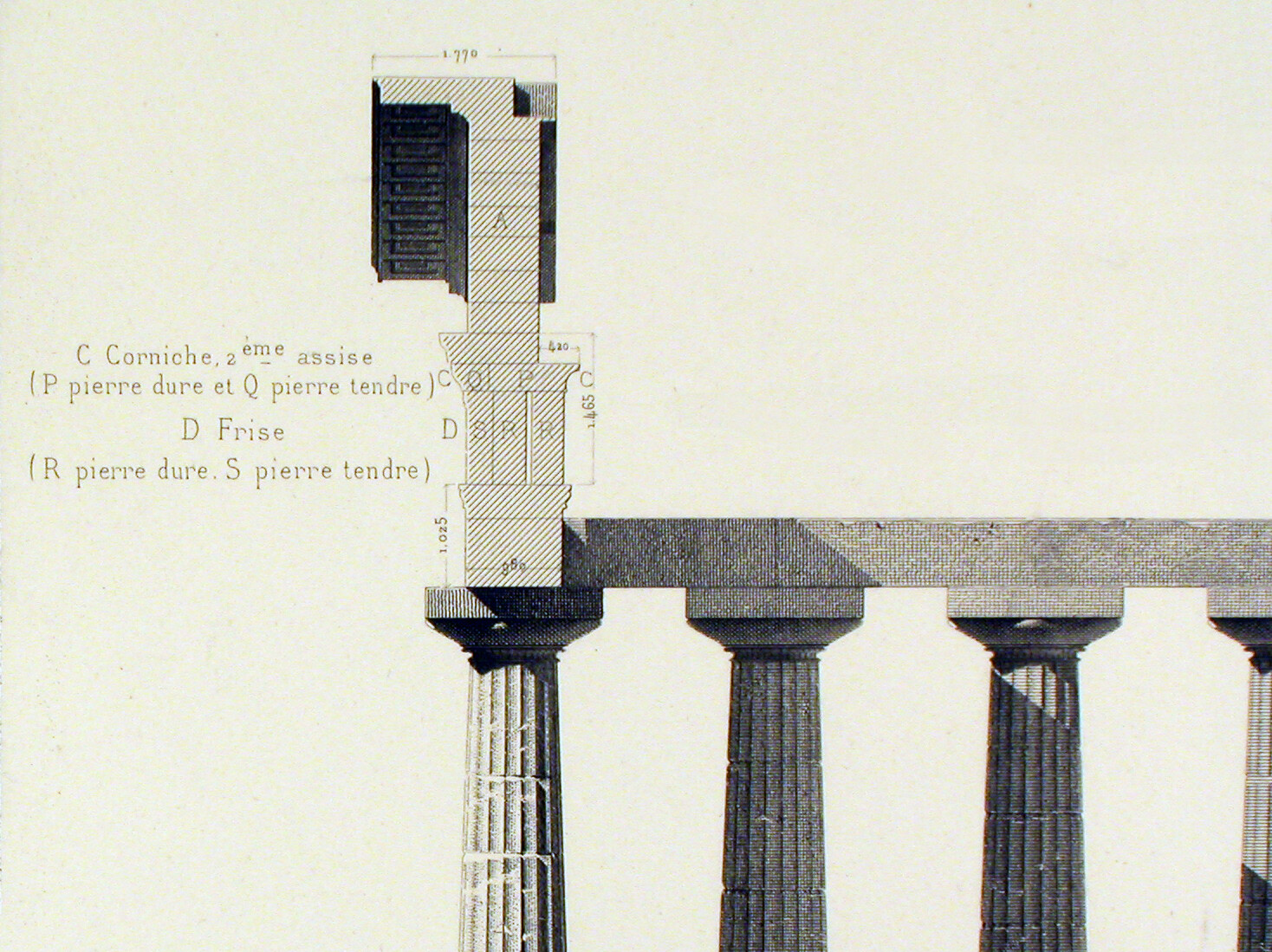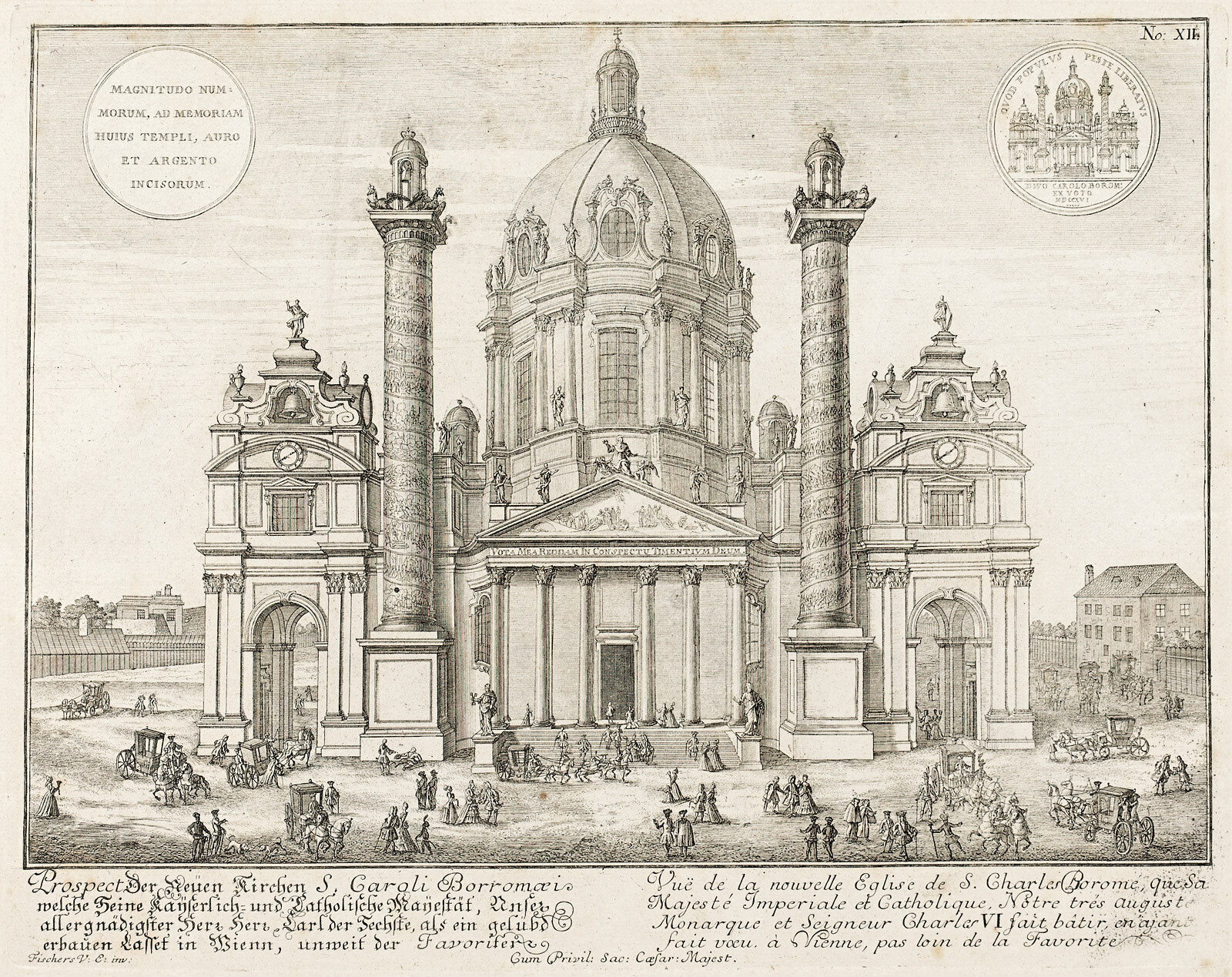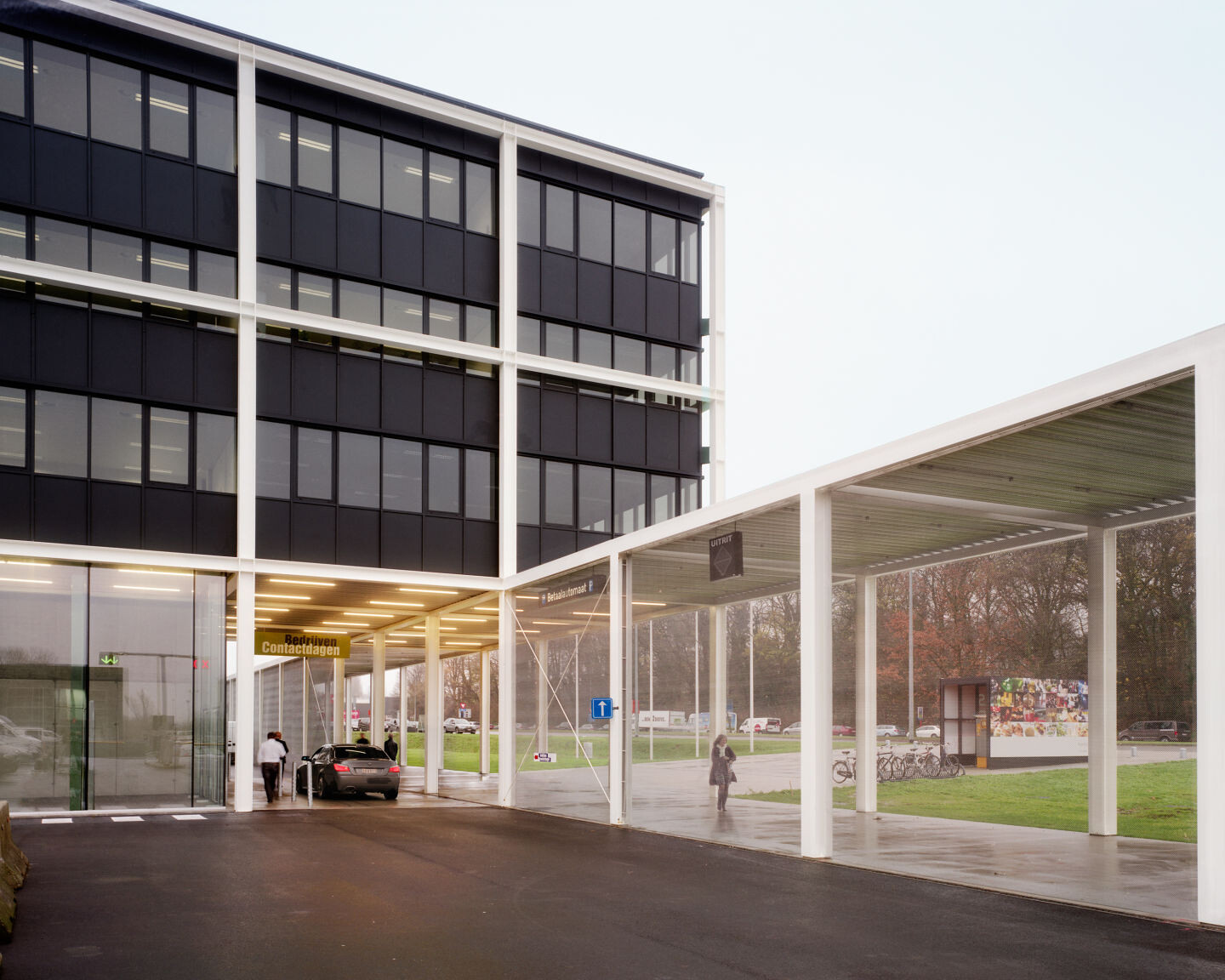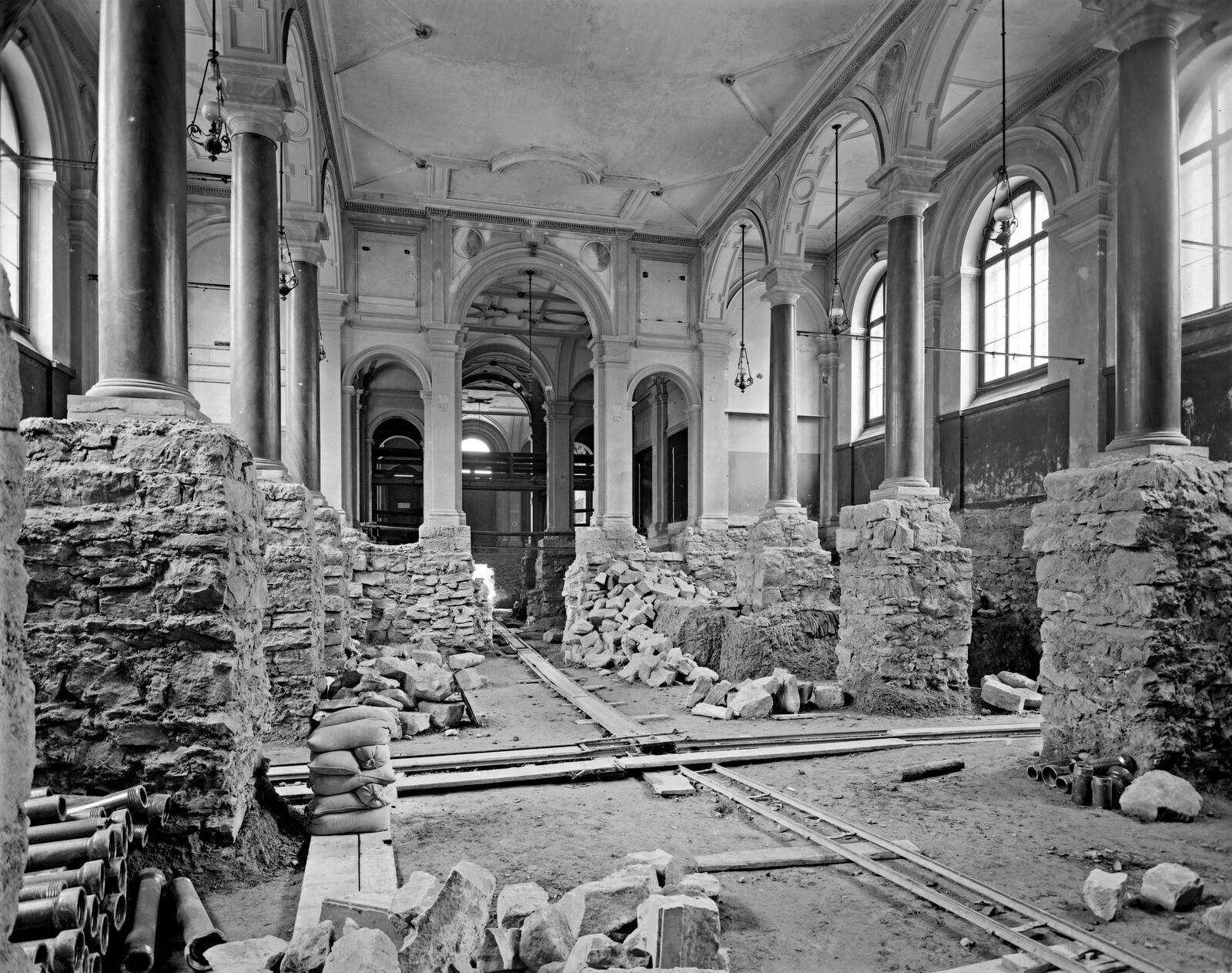Who put the slash in history/theory? It was a consequential stroke, although its origin is hard to pinpoint. It seems first to have appeared in the late 1960s or early 70s, when architecture schools began to accord theory the same value as history. Interestingly, the history/theory conjunction appears idiosyncratic to architecture—we don’t encounter anything similar in literature, for example, or in the sciences. In the age of the computer backslash, we need to specify it as a forward slash. As a shorthand for “history and/or theory,” we sometimes find it substituted with an ampersand (“history & theory”), or with nothing (as in the Germany acronym gta, the Institute for the History and Theory of Architecture at the ETH-Zurich, established in 1967). It’s also often conjoined with criticism (as in HTC, the History, Theory + Criticism of Architecture and Art program at MIT, founded in 1975). In any case, what it has signified, until recently, is something between an interrelated field of study and a full-blown discipline.
Yet if h/t (as it’s frequently abbreviated) enjoyed unparalleled success during the 1970s, 80s, and 90s, the last couple decades have witnessed a backlash. While it remains nominally present in school curricula and in architectural publications, theory no longer possesses the luster it once did, and, at least in North American institutions, history is fighting an uphill battle against a culture programmatically directed toward the future. Back in 2000, in the valedictory issue of the journal Assemblage, I virtuously proclaimed: “There can be no history without theory. There can be no theory without history. History without theory is just one thing after the other. Theory without history is hubris.”1 Meanwhile, in the same issue, the protagonists of a new post-theoretical/postcritical position, shortly to become a media phenomenon, advocated otherwise. One declared, “The simple fact—one that we should celebrate rather than hide—is that criticism isn’t necessary.”2 Another, in a contribution titled “Which Way Avant-Garde?,” wrote approvingly, that “Despite the best efforts of [Deleuze’s] ‘French theory’ adherents, and indeed despite his own prejudices against management thinking […] the work of Deleuze will be brought to fruition not by ‘communists like us,’ as Antonio Negri and Félix Guattari dreamed in their pamphlet of the same name, but by intellectual entrepreneurs and managers of change in the fierce world of globalization.”3 Seventeen years later, it’s sufficient to observe that both of these writers are deans of major US architecture schools. And Deleuzianism, for its part, has become less of an obsession of architects and/or receded into the misty history of late twentieth-century architectural theory.
Rather than rehash the postcritical argument here, though, it is more useful to consider what has usurped the prestige of history, theory, and criticism in schools over the last decade and a half and to try to understand in what ways the managerial revolution has overtaken architectural academe. A quick and unscientific canvass of the websites of leading North American architecture institutions indicates that “advanced research,” “applied research,” and “research labs” are now the marquee items in curricular programs, whether integrated into the design studio sequence, treated as electives, or elevated to the status of special “centers” and “units.” Instead of history/theory today, what we now have is research. Research is the holy grail of contemporary architecture education, and the “laboratories” in which it is carried out—by white-coated architectural technicians, figuratively speaking—are its shrines. As for criticism: arguably, we now have something like “curation.” History/theory has turned into research/curation.
Currently, at one of the schools where I teach, the basic history/theory curriculum, a required three-semester sequence for all incoming M.Arch. students, is about to undergo major revamping. One proposal on the table is to scrap large lecture courses and divide each thirteen-week semester into two six-week “modules” taught by a rotating cast of faculty members. The modules are to be focused on the following “themes”: foundations/theory, urban/environmental, and housing/contemporary theory. The logic behind this new set of slashed compounds is less than self-evident, and notably, history per se is not among any of the specified themes. The stated objectives include providing faculty with more flexibility, potentially tying in academic coursework with the design studio sequence, and giving students “options.” I really don’t know whether these are good ideas or bad. I am not against change. What I do know is that the large lecture courses on the history of modern architecture that I have been honing for a number of years, in which I try to give students a comprehensive critical overview of the last century and a half of architecture (principally European and American, although I’ve increasingly made efforts to offer a more global picture), will be retired.
What are the implications of the shift away from history and theory and toward research, research, research? I hasten to mention that research is actually not a brand-new preoccupation in architecture. It was fundamental to the polytechnical educational model in its nineteenth-century origins, and, in the US adaptation, to the engineering experiment stations that cropped up in early land-grant universities, which investigated a range of topics from the acoustics of auditoriums to the use of the Dewey Decimal System in the classification of architectural knowledge. By the 1930s, the hands-on workshop model pioneered at the Bauhaus started to be widely disseminated, giving meaning to a modern concept of design as research, and displacing the dominant model of the Beaux-Arts atelier with its emphasis on individual artistic inspiration, historical precedent, and rituals of representation. After World War II, with the ascendancy of the social sciences in the liberal arts university, methods based on statistics, behavioral science, systems theory, and fieldwork began creeping into programs in architecture education from Berkeley to Ulm.
Yet the recent fetishization of research in architecture schools has new ingredients. Obviously, the skillset most useful for research differs from that required for theoretical and critical inquiry. As a methodology rooted in science, research (whether “pure” or “applied”) is founded on claims of objectivity and factuality. While, as just suggested, it can be carried out in any architectural domain—from technology and construction to design to history and theory—it relies on the activities of finding, collecting, organizing, documenting, categorizing, cataloging, analyzing, editing, and (ultimately, in the curatorial stage) arranging information. Architects are especially adept at this last. In privileging hunting and gathering over more sedentary tasks like reflecting and questioning, research rewards enterprise and ingenuity. It eschews tendentiousness, preferring to “defer judgment”—to borrow Denise Scott Brown and Robert Venturi’s formulation with respect to their “Learning from Las Vegas” studio—at least provisionally. Today research projects in every field benefit spectacularly from the affordances of computerization and distributed networks of information. At the same time, since access to sources and resources is everything, the researcher remains beholden to the provider’s procedures and protocols, and is generally more tied to patronage and funding than the theorist or critic, who, relatively speaking, operates with greater autonomy.
All this is to suggest that today’s culture of research and curating is more perfectly geared than that of theory and criticism to a form of higher education that is in process of being profoundly reshaped by market forces, by consumer values, by globalization, and by digital media. Universities are being restructured to run on the for-profit model of the business corporation, and under the regime of cognitive capitalism, the production of research is integral to their lifeblood and their brands. As Andrew Ross has written:
In all likelihood, we are living through the formative stages of a mode of production marked by a quasi-convergence of the academy and the knowledge corporation. Neither is what it used to be; both are mutating into new species that share and trade many characteristics. These changes are part and parcel of the economic environment in which they function; where, on the one side, a public commons unobtrusively segues into a marketplace of ideas, and a career secured by stable professional norms morphs into a contract-driven livelihood hedged by entrepreneurial risks; and, on the other side, where the busy hustle for a lucrative patent or a copyright gets dressed up as a protection for creative workers. Here the restless hunt for emerging markets masquerades as a quest for further international exchange or democratization.4
If this characterization has until quite recently been more recognizable as a description of the academic-administrative environment in fields like medicine and the social sciences, today the bureaucratization, instrumentalization, and globalization of the knowledge economy have spread to every corner of the university. The buzzwords of innovation, creativity, sustainability, resilience, and “design thinking” have put architecture departments in the center of the game, making their research eminently fundable. While a project in architectural history is, of course, less monetizable than, say, a digitally fabricated panel system, inevitably it is permeated by the same system of values. A comparative survey of dissertation topics in architectural history in 1965, 1985, and 2010 would tell a revealing story (and would indeed be a worthwhile piece of research). Today’s hot topics include the archaeology of the digital, proto-globalist tendencies from the Crystal Palace on, early intimations of environmentalism, and the like. Undoubtedly scholarly attention to these issues is timely and well warranted. Every generation rewrites the history of its own present; in this way history becomes useful for life, as Nietzsche argued it must in the second of his Untimely Meditations.5 Yet the commercialization of the scholarly field increasingly makes the doctoral student or mid-career academic into an aggressive go-getter of fellowships, postdocs, and research opportunities, one who is hardly less strategic or zealous than the cancer researcher. It’s no secret that entanglement with funding tends to affirm and inscribe the interests of the sponsor or patron in the project, and certainly architecture has been no stranger to the blandishments of patronage since at least the Renaissance. (Of course, Piranesi managed to be at once flattering to his patrons and subversive, and perhaps Rem Koolhaas has mastered the same trick.) Yet the permeation of architecture education by capitalist prerogatives, from the mastery of grantcraft to the hustle of getting published to the curation of the portfolio or tenure dossier, has made faculty and students alike into entrepreneurial players in a competitive academic marketplace.
In this context, theory and criticism are tangential and even undesirable pursuits, serving mainly to inject friction into a self-lubricating system. In its emergence in the 60s and early 70s, architectural theory had an essential role to play in attacking and dismantling modernist orthodoxy, and it was key to the ideological success of postmodernism. It also took inspiration from ideas emerging in other university departments, especially literature. Postmodernism’s rage for theory in its most radical manifestations (notably poststructuralism) may have been the last gasp of the modernist avant-garde’s revolutionary ambition to overturn the dominant system of values, even if only at the level of culture. But in the increasingly revanchist political climate of the late 70s and 80s, the upstart subfield of theory itself became institutionalized and turned into an academic industry, with a star system and a self-serving network of publications, conferences, and exhibitions that reduced the political to a talking point. The backlash against theory in architecture that erupted in the 90s was overdetermined by both growing exasperation with this intellectual hyperinflation and the desire, in an expanding global market for building construction and an explosion of exciting new technologies, to get back to pragmatic problem-solving.
Today, though, it’s clear that the fin-de-siècle convergence between the vanguard of theory and a techno-futurist architectural practice folded smoothly into the underlying neoliberal agenda. Now that capitalism is the most revolutionary force in the world, a triumphant managerial ethos has given rise to a host of new specializations laser-focused on issues of optimization, performance, and delivery. I just received an email solicitation from an architectural colleague who calls himself an “algorithmic consultant.” The more public-oriented intellectual is now a “thought leader.”
What does all this mean for the practice of architectural pedagogy, the imperative of research, and in particular for those who profess architectural history and theory? More, better h/t research is a genuine good, generally speaking, and the work generated by young academics eager to undertake deep dives into newly opened archives, sophisticated in using powerful search engines, and adept at mining vast quantities of data has undoubtedly yielded a trove of new knowledge. Yet in an increasingly commodified system in which architecture students are in training to become future members of a productive (and debt-ridden) class of “creatives” and, at the same time, are not shy about exercising their rights as educational consumers, the tradition of skepticism and negativity associated with critical thinking holds less and less allure. Ironically, what Max Weber defended in his 1919 essay “Wissenschaft als Beruf” (“Knowledge as Profession”) as the academic ideal of value-free scholarship has become a ruse of the system. It is precisely so-called objective or value-neutral research that is able to be mobilized most effectively and efficiently for purposes of a market-driven society. This same paradox pertains to Manfredo Tafuri’s well-known attack on operative criticism. The Venice historian articulated his critique of operativity in his early books Theories and History of Architecture (1968) and Architecture and Utopia (1973), skewering tendentious historians like Sigfried Giedion and Bruno Zevi for making ideology rather than making history. Against such “ready-made judgments of value,” he insisted, the best options were “analytical rigor” and “more careful philology.”6), 152–53.] It is noteworthy, though, that a few years later, Tafuri felt compelled to revise this stance, calling on the historian to balance on the “razor’s edge that separates detachment and participation.”7
My intention here is not to demean, or demonize, research. Research is a method applicable to work in both the hard and soft sciences and the humanities, as we have said, and it is integral to knowledge production in technology, design, and history/theory. Yet it is not, in itself, synonymous with them. It has no inherent content—unless, that is, method itself is deemed to be a form of content. While rooted in the disinterested Forschung of the German technical university and also, on the humanities side, in traditions of dispassionate textual scholarship, it has equal affinity with the directed R&D of the Cold War military-industrial-academic complex that coalesced during World War II. It is the latter spirit that seems to prevail in contemporary architectural labs.
In contrast, theory and history are inherently more disputatious and unoptimizable pursuits. They involve continuous contestation, interrogation of facts and power relations, and occasionally revelatory intuitions. In this sense, they are closer to aesthetic and political experience than to the grind-and-eureka of scientific discovery, and it is through this modality that they function not just pedagogically but also, potentially, as transformers of consciousness. As Hans Ulrich Gumbrecht writes in The Powers of Philology (2003), it is the challenge of academics in the humanities today to draw on whatever reservoir of “‘unfunctionalized’ desire” still exists.8 In other words, the architectural historian/theorist/critic—no more nor less than the studio teacher—needs to find ways to infuse timely knowledge with untimeliness, to give so-called immaterial labor materiality, and to open up an educational space that can serve as counterweight to a weightless global regime of production, distribution, and consumption.
Assemblage 41 (2000), 61.
Robert Somol, “In the Wake of ‘Assemblage,’” Assemblage 41, (2000), 93.
Michael Speaks, “Which Way Avant-Garde?,” Assemblage 41, (2000), 78.
Andrew Ross, “The Rise of the Global University,” in The Edu-Factory Collective, Toward a Global Autonomous University (New York: Autonomedia, 2009), 30–31.
“We need history, certainly, but we need it for reasons different from those for which the idler in the garden of knowledge needs it, even though he may look nobly down on our rough and charmless needs and requirements. We need it, that is to say, for the sake of life and action, not so as to turn comfortably away from life and action….” Friedrich Nietzsche, “On the Uses and Disadvantages of History for Life,” in Untimely Meditations, ed. Daniel Breazeale (Cambridge: Cambridge University Press, 1997), 59.
Manfredo Tafuri, Theories and History of Architecture (New York: Icon Editions, 1979 [orig. ed., 1968
Manfredo Tafuri, “The Historical ‘Project’” (1977), in The Sphere and the Labyrinth: Avant-Gardes and Architecture from Piranesi to the 1970s (Cambridge: MIT Press, 1987), 11. I discuss this paradox in my essay “Looking Back at the 1960s Looking Back,” in Rosemarie Haag Bletter and Joan Ockman with Nancy Eklund Later, eds., MAS: The Modern Architecture Symposia, 1962–1966, A Critical Edition (New Haven: Yale University Press, 2014), 38–39.
Hans Ulrich Gumbrecht, The Powers of Philology: Dynamics of Textual Scholarship (Urbana: University of Illinois Press, 2003), 86. On the relationship between historical scholarship and teaching, see also Gumbrecht’s book The Production of Presence: What Meaning Cannot Convey (Stanford: Stanford University Press, 2003), 125–32.
History/Theory is a collaboration between the Institute for the History and Theory of Architecture (gta), ETH Zürich and e-flux Architecture.
Subject
History/Theory is a collaboration between the Institute for the History and Theory of Architecture (gta), ETH Zurich and e-flux Architecture.
